Commandos Strike At Dawn

Brief Synopsis
Cast & Crew
John Farrow
Paul Muni
Anna Lee
Lillian Gish
Sir Cedric Hardwicke
Ray Collins
Film Details
Technical Specs

Synopsis
In 1939, the residents of a peaceful Norwegian fishing village gather to celebrate the wedding of Anna and Gunner Korstad. That evening, as widower Eric Toresen dances with Judith Bowen, the daughter of a British admiral, Bergesen, the town pessimist, worries about the encroaching German forces. After they finish their dance, Eric introduces Judith, who is scheduled to sail for England the next day with her father and brother Robert, to his young daughter Solveig. Soon after Eric bids a melancholy farewell to Judith, Hitler begins his march across Europe and into Norway. After seizing power from the Norwegian government, the Germans proclaim that resistance will be met with death and impose rigid curfews and restrictions on the residents of the fishing village. When Bergesen questions their actions, the Germans arrest him and take him away for questioning. After hoisting the Nazi flag over the village, the Germans proceed to burn objectionable books, confiscate the villagers' supplies and indoctrinate their children. When Solveig returns home from school one day and recites the lesson of German superiority taught her by a Nazi officer, Eric protests to her teacher. In reply, the teacher wistfully speaks of joining the Norwegian resistance movement in England. Soon after, Bergesen, now a broken old man after his experience with the Nazis, returns home. Outraged by the Nazis' barbarism, Eric admonishes the villagers to unite and form an underground resistance movement. Anna, fearing for her life and that of her husband Gunner, pleads to let others fight their battles for them. Gunner joins the resistance, however, and one day is arrested and executed for his activities. In retaliation, Eric stabs the German officer who ordered his execution, then seeks safety for his daughter and takes her to Mrs. Olav's cabin in the hills above the village. Exhausted, Eric falls asleep there and is awakened the next morning by the sound of German trucks. Eric and Solveig hide in a well, and after searching the house, the Germans inform Mrs. Olav that they have taken five villagers hostage, her grandson among them, and will execute them unless Eric surrenders within two days. Entrusting Solveig to Mrs. Olav's care, Eric takes cover in the woods, where he overhears some German soldiers discussing the construction of a secret German airstrip there. Realizing that he must notify the British about the airstrip, Eric asks Johan Garmo to transport him to England in his fishing boat. When Garmo tells Eric about the killing of the hostages, Eric decides to surrender, but Garmo convinces him that he must remain free because his mission is crucial. Agreeing to convey Eric and several others to England, Garmo asks innkeeper Karl Arnesen to join them. After accepting Garmo's offer, Karl informs the Germans of their plans and is given a silent dog whistle with which to summon the German troops once he boards the boat. As the men gather in the woods to meet Garmo that night, Karl's wife Hilma warns Eric of her husband's treachery. Upon casting off from shore, Eric seizes Karl's whistle and pushes him overboard to certain death. Days later, the little boat lands in England and Eric travels to London to tell Admiral Bowen about the airstrip. After agreeing to lead a troop of British commandos to the strip, Eric meets Judith again. When Eric is ordered to immediately fly with Robert, now a soldier, to Scotland, Judith follows him there. On the eve of his mission, Eric proposes to Judith, and after she accepts, he ships out with the commandos. Under Eric's navigation, the British ship sails across the North Sea, up the fjords and to a river leading to the airstrip. As the commandos disembark, Robert dispatches two men to find Solveig. After a prolonged battle with the Germans, the commandos destroy the airstrip and return victoriously to their ship. When the men sent to find Solveig report that she and Mrs. Olav are being held prisoner at the inn, Robert and Eric lead the troops to free her. In the ensuing combat, Eric and Robert are both killed by German bullets, but the commandos overpower the Germans and free their prisoners. As Solveig and the other villagers sail to safety in England, they vow to return home to Norway one day.

Director
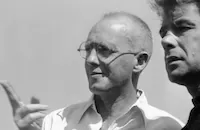
John Farrow
Cast
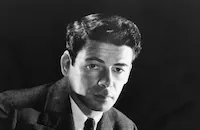
Paul Muni

Anna Lee

Lillian Gish

Sir Cedric Hardwicke
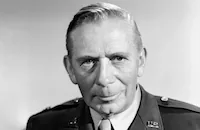
Ray Collins
Flying Officer Robert Coote Rcaf

Rosemary Decamp

Alexander Knox
Elisabeth Fraser
Richard Derr
Erville Alderson
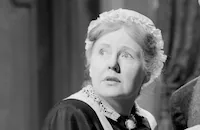
Barbara Everest
Rod Cameron

Louis Jean Heydt
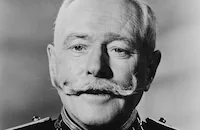
George Macready
Arthur Margetson
Captain V. S. Godfrey Rcn
Commander C. M. Cree Rcn
Brigadier R. A. Fraser Vd, Cra
Commander C. T. Beard Rcn (r)
Major Gus Sivertz
Sergeant Major L. E. Kemp
Sergeant Major Mickey Miguelon

Ann Carter
Elsa Janssen
Ferdinand Munier
John Arthur Stockton
Crew
Anne Bauchens
Clarence Bricker
Lester Cowan
Lester Cowan
Harve Foster
John Goodrich
Louis Gruenberg
Edward Jewell
Danny Mccauley
William C. Mellor
Irwin Shaw
M. W. Stoloff
Al Vaughn
Gordon Wiles

Film Details
Technical Specs

Articles
The Commandos Strike at Dawn
According to Muni biographer Jerome Lawrence, the actor was impassioned about the film to the point of "near ferocity" because he considered it his way of aiding the Allied war effort. He received excellent notices for the understated sincerity he brought to his starring role, with Bosley Crowther commenting in The New York Times that "It is clearly apparent that Mr. Muni had his heart and soul in the picture, and that its most affecting moments are largely due to him."
Although Gish brought customary conviction to her supporting part, it proved to be a thankless one that did nothing for her standing in the film world. She said later of the movie, set in Norway but shot in Victoria, British Columbia, that "It means little to me but it gave me a nice vacation." The weakness of her role was credited with a change of agents for Gish, from George Volck to Kurt Frings -- although the first film assignment secured for her by Frings, a Grade-B Universal musical called Top Man (1943), did even less for her career, and she would not face the cameras again for another three years after that.
Commandos Strike at Dawn was based on a short story by C.S. Forester (Captain Horatio Hornblower) that appeared in Cosmopolitan magazine, with a screenplay by Irwin Shaw (The Young Lions). Muni plays a gentle widower who revolts against Nazi atrocities in his Norwegian fishing village. Escaping to Britain, he agrees to lead a group of British commandos back to Norway to destroy a German airfield and to rescue his young daughter (Ann Carter). Gish is the wife of a man (Ray Collins) who has been arrested by the Germans, and Anna Lee provides Muni's romantic interest as the daughter of a visiting British Admiral (Cedric Hardwicke). Alexander Knox plays a German officer, and Lloyd Bridges has an early, uncredited part as a young soldier.
Critics of the day admired the overall effect as well as Muni's performance. A reviewer for Variety wrote that "for all its ferocious combat and such grim avenging justice as seldom has been shown on the lately timid American screen, Commandos Strike at Dawn is exalting, rather than depressive. It builds up a terrific charge of emotion, but it also is permitted to discharge that audience emotion with a terrific purge." Despite the movie's obvious intent as propaganda and Columbia's limited wartime budget, it continues to pack a punch today.
Commandos Strike at Dawn was directed by John Farrow, who was then a lieutenant commander of the Royal Canadian Navy and whose wife, Maureen O'Sullivan, was pregnant with future actress Mia. Producer Lester Cowan was able to utilize Canadian troops from four famous regiments: the Canadian Scottish, the Royal Rifles, the Sault Ste. Marie and Sudbury, and the Rocky Mountain Rangers. Farrow never knew from one day to the next when these real commandos would be available, since they disappeared periodically, presumably on real missions. The cast and crew were instructed not to ask any questions once the troops returned.
Muni threw himself into his role with fervor and was injured during filming when he climbed through barbed wire and sustained a six-inch gash in his left arm. There was another problem: Muni disliked any physical contact with actresses playing opposite him, even in romantic situations. As Anna Lee confided to Jerome Lawrence, "It was very difficult, when we were playing a love scene, even across a restaurant table, not to touch him, to pat his arm, I literally held my hands behind my back or in my pockets."
Muni himself commented, "I am not a woman hater. I think they are far and away the most beautiful 50 percent of the universe... But for myself, the invasion of privacy, the camera climbing into bed with me, is not something I want on film."
Oddly, his reticence left him when the company returned to Hollywood and he and his leading lady posed for publicity stills. Lawrence writes that suddenly "Muni seized Anna Lee and bent her backward as if he were Rudolph Valentino and she were Vilma Banky -- and kissed her passionately on the mouth. His eyes were sparkling like a little boy's, and he suggested pose after pose, romping about while the startled cameraman clicked away." Unfortunately none of these stills seem to have survived!
The original score for Commandos Strike at Dawn by Louis Gruenberg and Morris Stoloff was nominated for an Oscar®. Celebrated Russian composer Igor Stravinsky had created an earlier score, but it was rejected by the film's producers and later published by Stravinsky as "Four Norwegian Moods." Behind-the-scenes footage shot during location filming is included in the CBC-TV documentary Canada's War in Colour (2005).
Producer: Lester Cowan
Director: John Farrow
Screenplay: Irwin Shaw, from story by C.S. Forester
Cinematography: William C. Mellor
Film Editing: Anne Bauchens
Original Music: Louis Gruenberg, Morris Stoloff
Art Direction: Edward C. Jewell
Special Effects: Barney Wolff
Cast: Paul Muni (EriK Toresen), Anna Lee (Judith Bowen), Lillian Gish (Mrs. Bergesen), Sir Cedric Hardwicke (Adm. Bowen), Ray Collins (Johan Bergesen), Robert Coote (Robert Bowen), Rosemary DeCamp (Hilma Arnesen), Alexander Knox (German captain), Elisabeth Fraser (Anna Korstad).
BW-98m.
by Roger Fristoe

The Commandos Strike at Dawn
Quotes
Trivia
Notes
The working title of this film was The Commandos Come at Dawn. The picture opens with the following dedication and prologue: "dedicated to the officers and men of the armed forces of Canada, Great Britain and Fighting Norway who participated in the filming of the picture. For long past the kingdom of Norway had been a domain of peace. Content with their pattern of honesty and industry they were a people who feared naught and envied nobody. So it was in the summer of 1939..."
Preproduction news items in Hollywood Reporter note that at one time Columbia negotiated with Jean Hersholt to appear in the film. Although a news item places Edmund Gwenn in the cast, he does not appear in the released film. According to unidentified contemporary sources in the film's production files at the AMPAS Library, the Canadian government was instrumental in the production of the film. The picture, which was shot predominantly on Vancouver Island, British Columbia, featured actual commando trainees from the Canadian Scottish, Sault Ste. Marie, Rocky Mountain Rangers and Royal Rifles divisions of the Canadian Army. A quartet of underground warfare experts from Canada's Norwegian Flying School served as technical directors on the film, according to another unidentified contemporary source. Director John Farrow had been a lieutenant in the Royal Canadian Navy until a war injury forced his retirement early in the war. A news item in PM (Journal) adds that the Canadian government loaned planes, pilots and warships to the production. Commandos Strike at Dawn marked the film debut of actor George Macready.
After the film was completed, it was selected by the U.S. government to be rushed to theaters in North Africa. Twenty home front organizations and 2,000 defense workers from Lockheed Aircraft attended the Los Angeles premiere, according to a Hollywood Reporter news item. The picture was nominated for an Academy Award for Best Score, and also marked Lillian Gish's first screen appearance since the 1933 Paramount picture His Double Life (see AFI Catalog of Feature Films, 1931-40; F3.1924). According to a Hollywood Reporter news item, Gish's performance in Commandos Strike at Dawn won her a contract from producer Lester Cowan.















